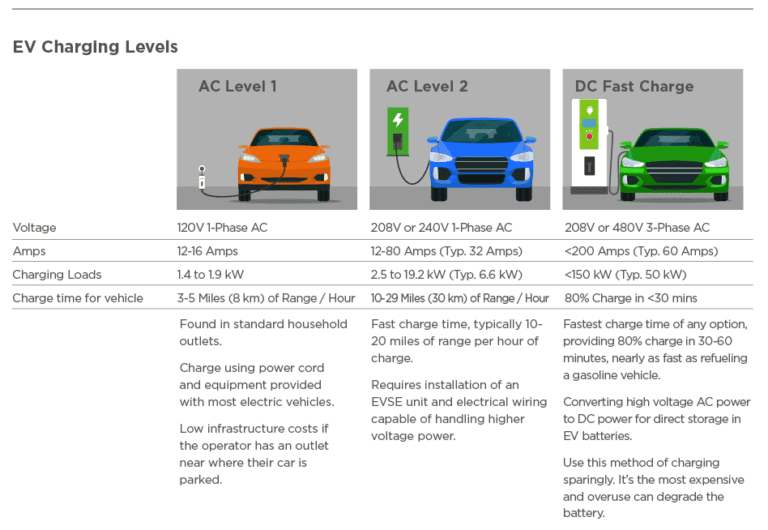Common Terminology
EV (Electric Vehicle): A broad category that includes all vehicles that are fully powered by Electricity or an Electric Motor.
BEV (Battery Electric vehicle or all-electric): Utilize energy that is stored in rechargeable battery packs. BEV’s sustain their power through the batteries and therefore must be plugged into an external electricity source to recharge.
Regenerative braking: A method of breaking used by EV in which energy from the braking of the vehicle is stored and used.
ICE (Internal Combustion Engine): Powered by combustible fuel, often petroleum or natural gas products.
ICEV (Internal Combustion Engine Vehicle): Powered by Fossil Fuels are ICEVs.
HEV (Hybrid Electric Vehicles): Utilizes a dual system of electric propulsion and an internal combustion engine.
PHEV (Plug-in Hybrid Electric Vehicles): Contain a battery that can be charged with an external electric power source, PHEV’s are a mixture of all electric vehicles and ICEV’s.
EVB (Electric Vehicle Battery): Used to power the movement of a BEV.
AC (Alternating Current): A charge of electricity that regularly changes direction, which is the kind of power that comes from the power plant to homes and businesses.
DC (Direct Current): A charge of electricity that flows in one direction and is the type of power that comes from a battery.
AER (All-Electric Range): The range any EV can reach solely using electricity.
MPGe / Le/100km: Methods of measuring fuel economy that allow you to normalize fuel efficiency across different powertrains.
- MPGe (US) – MPG equivalent. One gallon of fuel is the energy equivalent of 33.7 kWh of electricity
- Le/100km (CN) – litres equivalent per 100 km. One litre of gasoline is the energy equivalent of 8.9 kWh of electricity
EVSE (Electric Vehicle Supply Equipment): The equipment needed to charge EVs and a protocol to help keep drivers and vehicles safe while charging.
GHG (Greenhouse Gas) Emissions: Gases that trap heat in the atmosphere. CO2 emissions are the largest contributor to GHG, and transportation makes up about 1/3 of all CO2 emissions.
Well-to-Wheel Emissions: All emissions related to fuel production, processing, distribution, and use. In the case of gasoline, emissions are produced while extracting petroleum from the earth, refining it, distributing the fuel to stations, and burning it in vehicles. In the case of electricity, most electric power plants produce emissions, and there are additional emissions associated with the extraction, processing, and distribution of the primary energy sources used for electricity production.
Scope Emissions: Companies measuring and reporting on their emissions generally identify them in 1 of 3 pre-defined scopes.
- Scope 1, Direct Emissions: Emissions from company-owned and controlled resources.
- Scope 2, Indirect Emissions (owned): Emissions from the generation of purchased energy, from a utility provider.
- Scope 3, Indirect Emissions (not owned): Emissions not included in scope 2 that occur in the value chain of the reporting company, including both upstream and downstream emissions.

Up Next